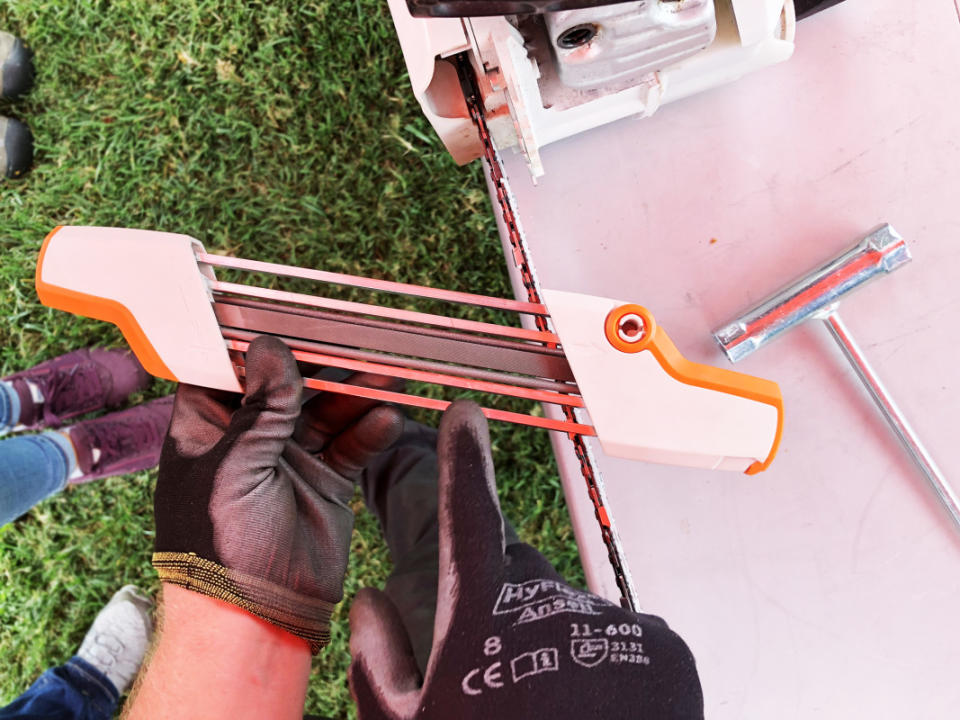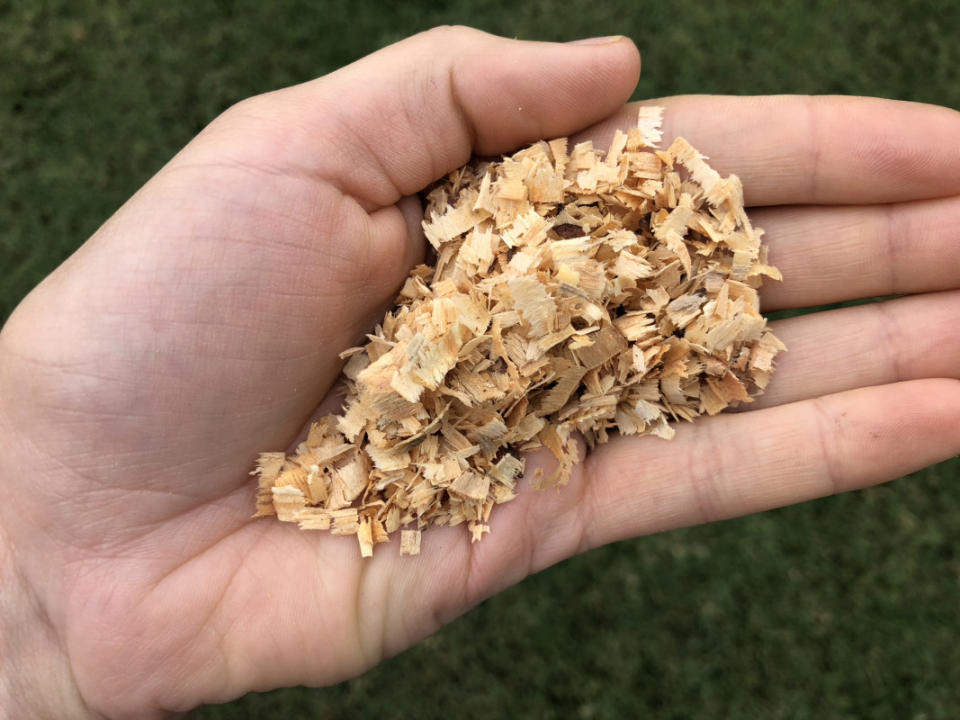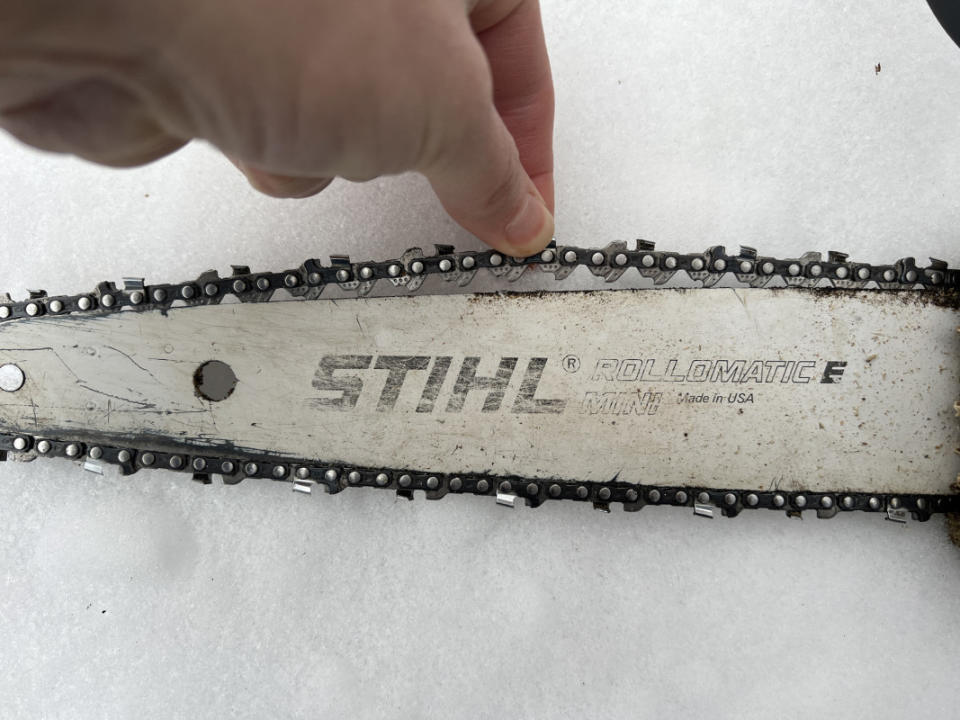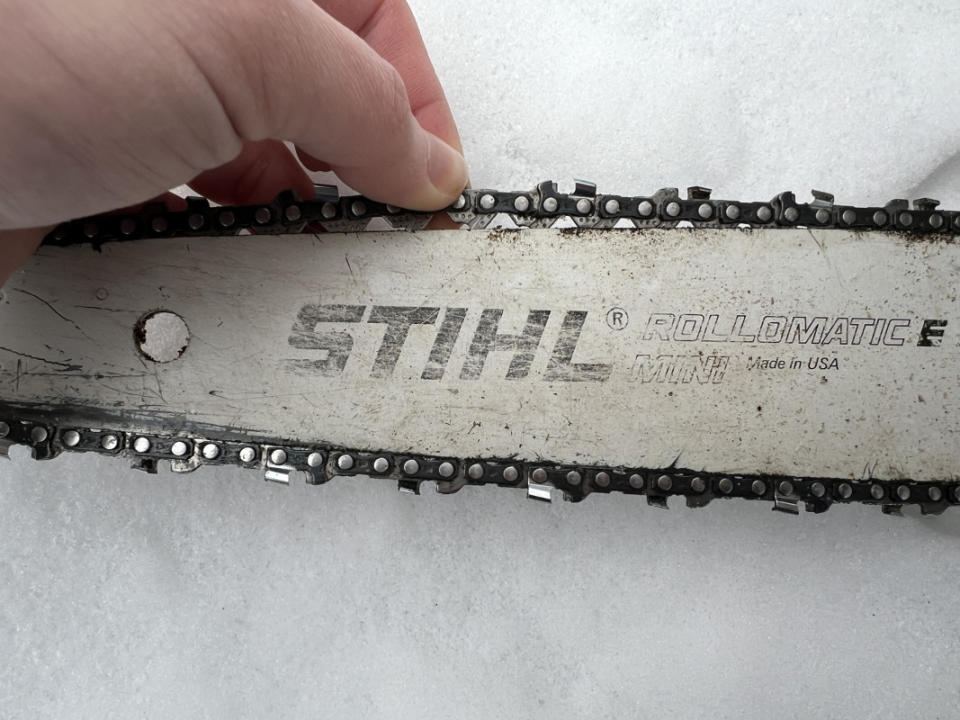Video: How to Sharpen or Replace a Chainsaw Blade
- Oops!Something went wrong.Please try again later.
Men’s Journal aims to feature only the best products and services. If you buy something via one of our links, we may earn a commission.
Chainsaw sharpening is an essential skill if you're going to make the most of your chainsaw. Luckily, regular maintenance isn't as hard as it seems. The video below reviews the product in more depth. You'll get a closer look at the chainsaw bar, chainsaw blade, tension adjustment mechanisms, and the chainsaw housing.
The only chainsaw sharpening tool you'll need is STIHL's 2-in-1 flat filing gauge. Chainsaw files make sharpening angles 100x easier. Note that there are multiple file diameters. Common sizes: 3/8" and 0.325".
We're modeling the technique on a battery-powered STIHL MSA 120 C-BQ electric chainsaw. Always refer to your user manual, because your type of chainsaw may have slightly different instructions for loosening the housing that secures your guide bar and chain or require a different file. Always remove the battery or disconnect the spark plug, and wear protective gear before making chain adjustments.

Emily Fazio
Chainsaw Chain Sharpening
Loosen the tension of the blade. You want it to be loose enough so you can manually pull the chainsaw blade around the bar. While you're testing the tension, notice how the blades face alternating directions. You're going to sharpen both angles in this tutorial, but you should focus on doing all the drive teeth that face in one direction in one full pass, and then flip the file and do all the teeth that face the other direction.
Align your chainsaw file. Note that the tool makes it easier to sharpen at a uniform depth. It is intended to be held at a proper angle so the handles are parallel to the chainsaw bar. The tool takes the guesswork out of the process and ensures you're sharpening each tooth at the right angle every time.
Push the file in the direction indicated by the arrows on the file guide. A good rule of thumb is to file each blade 2-3 times so it has a sharp edge. No need to oversharpen.
Flip the file gauge over. The flat file on the bottom faces a different angle.
Realign the file angle guide. It's still parallel with the chainsaw bar, but now it's set to file the teeth facing the opposite direction.
Repeat. 2-3 filing strokes per cutter.
Tighten the chainsaw blade. You want the tensioning screw to lock the blade into the chainsaw bar, but it shouldn't be overtightened.
Pro Tips:
Mark the first tooth you sharpen with a permanent marker. As you pull the chain around the bar, you'll notice when you're back to the first tooth you started sharpening.
Proper lubrication is necessary when you're using the tool. If you're having trouble sliding the chain by hand even when the tension is released, apply chain lubrication.
Lock the tool down into a table vise. Working a flat surface is important, but if you're having trouble sharpening the teeth and holding the chainsaw still, consider loosely locking the bar into a bench vise for stability.
How can you tell if your chainsaw blade is dull?
As soon as you feel like you're working hard to cut through a piece of wood, consider that it might be a dull blade. A sharp chain should cut smoothly with nearly no effort.
A sharp chainsaw tooth produces small wood chips. Excessive wear causes a dull chain to spit fine sawdust, not uniform chips.
Using a dull chainsaw comes with certain risks; get in the habit of monitoring the chain tension and sharpening the blades every 2-3 hours of continuous use, or if you're using a gas-powered chainsaw, every time you refuel.

Emily Fazio
Is it Faster to Use an Electric Sharpener?
We voted internally. Electric chainsaw sharpeners and bench grinders aren't worth it. Go with the manual file and feel more confident in your control and in the quality of your sharpening.
Related: What’s a Swedish Fire Log and Why is it so Awesome?
How to Tighten a Blade
It's dangerous to use a chainsaw if the blade is too loose, but it is normal for the tension of the chain to loosen as you use the tool. Routinely checking the tension reduces risk and keeps your chainsaw operating at peak performance. Know what to look for:
Lift the chain off the bar to check the slack. The chain will stretch a little as you pull, so you will notice some slack in the chain. But even so, the tips of the teeth should remain in the track.
Tighten the chain to reduce the amount of slack. If the tips of the teeth extend beyond the track, you're at risk of the entire chain jumping its track during use.
Check the tension periodically as you tighten it. You don't want it to be over-tightened.
Loose vs. Tight
Tighten your chainsaw chain so the teeth stay on track.

Emily Fazio

Emily Fazio
How to Replace the Chain
Open the chainsaw housing. It will lift off to expose the full chainsaw bar.
Clean up. The circulating blade can cause a lot of debris to build up. Clean out debris, such as wood chips and sawdust with an old toothbrush or soft cloth.
Lift the chainsaw bar off the body.
The chainsaw blade has no tension at this point, so it will slide right off.
Wrap a new chainsaw blade onto the guide bar. Ensure that the chainsaw chain direction is facing the right way—it needs to chew through the wood as it wraps down over the end of the bar.
Connect the end of the chain around the gear that lies beneath the housing.
Adjust the tension screw. Make sure the adjustment knob tightens it enough so the blade doesn't fall off when you re-attach the housing.
Replace the housing and fine-tune the tension on the chain.

